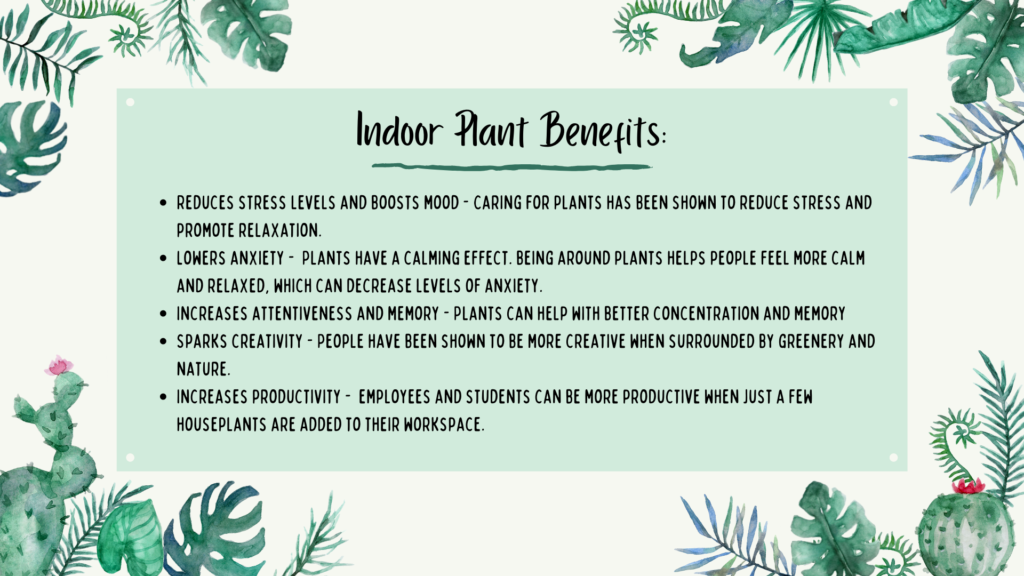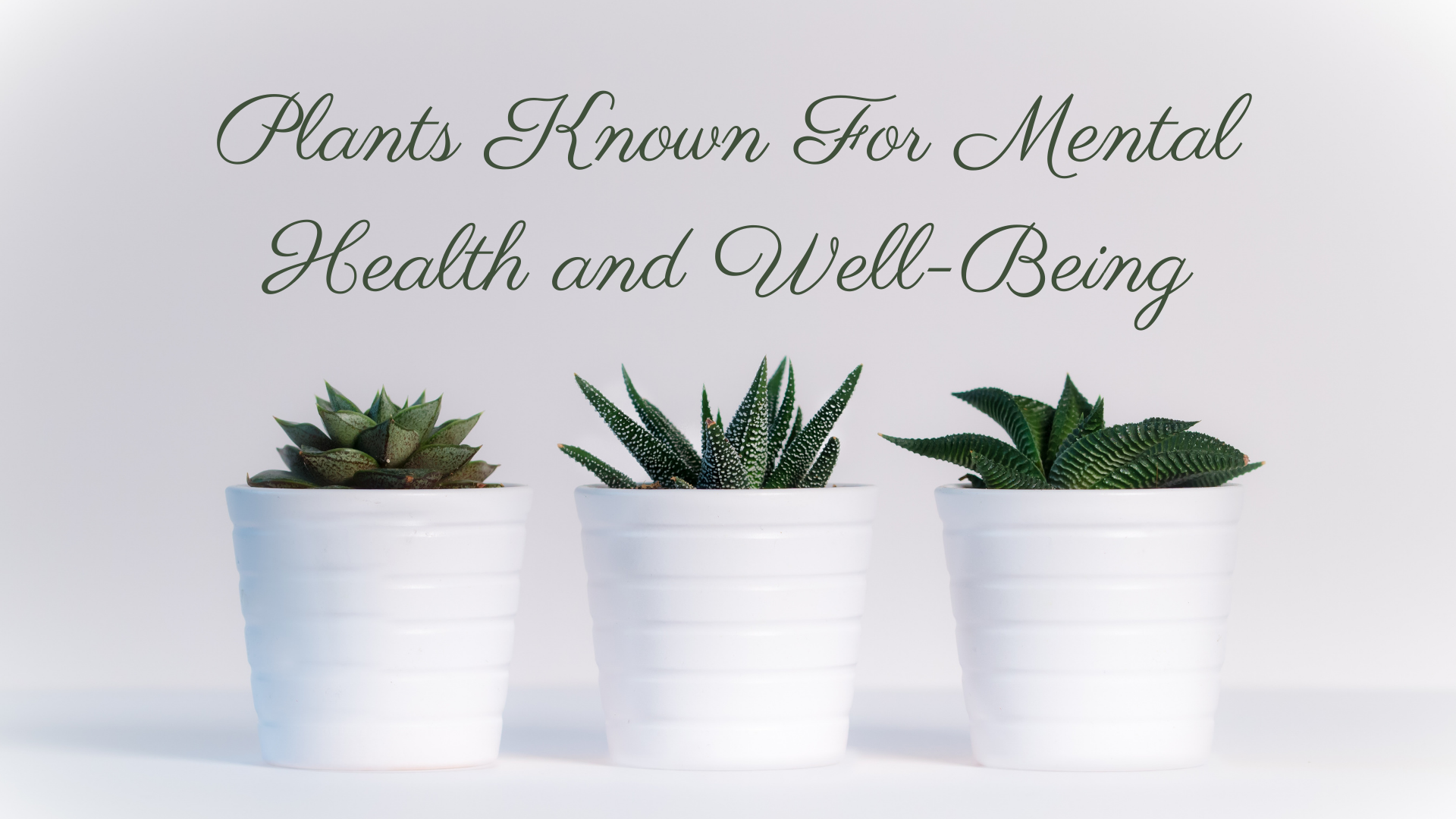Plants are great for more than just aesthetics; they can help with the air quality of your home as well as being helpful for your mental health and sense of well-being. Plants can naturally clean the air of toxins and chemicals, so they don’t just look good – they can help us to feel good too. Besides reminding us of our connection to nature, exposure to green spaces can improve mood, enhance cognitive skills, reduce stress, and promote well-being. Indoor plants can also boost your creativity and help you be more productive. We can bring some of the outdoors in, and by choosing the right type of plants, we can also get the added health benefits.

Here are some plants that are great for your home or office:
- Aloe Vera – known to heal surface wounds, sunburns, and skin ailments; it can also help purify the air.
- Bamboo Palm – natural humidifier
- Basil – positively impacts your blood pressure, stress levels, and even your mood
- Boston Fern – it restores moisture in indoor air, so it is ideal for those who suffer from dry. It also helps eliminate traces of formaldehyde, toluene and xylene.
- Chinese Evergreen – can filter toxins from the air and emits oxygen. The longer it remains in the room, the stronger it is in removing toxins such as benzene and formaldehyde from the atmosphere.
- Dracaena – Effective in absorbing benzene, formaldehyde, trichloroethylene, toluene, and xylene.
- English IVY – can remove up to 94% of mold from homes in as little as 12 hours. It also reduces the amount of airborne fecal matter and absorbs harmful chemicals from cleaning solutions. It also absorbs benzene which iscommonly found in offices.
- Eucalyptus – known for its pleasant aroma and also for its ability to help treat asthma, colds, and congestion.
- Flamingo Lilly – purifies surroundings of airborne toxins like ammonia, formaldehyde, toluene, and xylene
- Jade Plant – cleanses the air of indoor pollutants from things like paint and cleaning products
- Lavender – well-known for relieving stress and anxiety and can reduce insomnia.
- Monstera Adansonii – can purify the air and is useful in humidifying. *Toxic if ingested
- Peace Lily – natural purifier removing pollutants like ammonia, benzene, formaldehyde, trichloroethylene, toluene, and xylene. The plant reduces levels of mold spores by absorbing them through leaves. Great for bathrooms as they help keep tiles free from mildew. *Toxic if ingested
- Philodendron – is among the indoor plants that can absorb carbon dioxide and release oxygen through photosynthesis. It also provides a natural way of removing pollutants such as formaldehyde. *Toxic if ingested
- Snake Plants – scrub the air of airborne toxins that impact your sleep, energy, and mood. They are ideal for the bathroom and for the bedroom because they absorb carbon dioxide and releases oxygen at night. Snake plants are beneficial for those with allergies because they add moisture to the air and release oxygen making it easier to breathe.
- Spider Plant – Within 2 days they can reduce up to 90% of toxins in indoor air. Leaves also grow quickly and help reduce mold and allergens making them perfect for people who are allergic to dust.

Tips for selecting and caring for your perfect houseplant:
You don’t have to have a green thumb to enjoy beauty and the many health benefits of indoor plants. Just follow our tips below on how to select and care for your plants.
- Pick your houseplant based on your light – before purchasing a plant, determine where you want to place it. Check the amount of sunlight in the room and choose your plant accordingly.
- Consider your lifestyle – what is your daily schedule, travel frequency, and general forgetfulness? If you don’t have much time, then pick a plant that thrives despite neglect.
- Beware of over-watering – over-watering is the easiest way to kill a houseplant. For most plants, it’s better to under-water than to over-water. Instead of watering your plant on a schedule, water it only when needed. Check the soil first, and only water when it feels dry.
- Keep your houseplant’s environment stable – houseplants are most comfortable between 65 and 85 degrees. Extreme fluctuation in a plant’s environment can seriously stress it out. Do your best to avoid placing your plant near temperature hazards like vents and exterior doors, which might create drafts. Try to keep the plant in the same spot if possible. Moving it around to different spots or taking it outside can send it in to shock.
- Increase humidity if necessary – some plants, such as ferns, prefer more humid conditions. Keep a spray bottle of water on hand and mist them daily, or every few days.
If you still need help, there are also apps out there with individual care schedules and reminders to help keep your plants alive.
Here’s to your healthy home!



